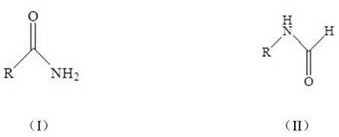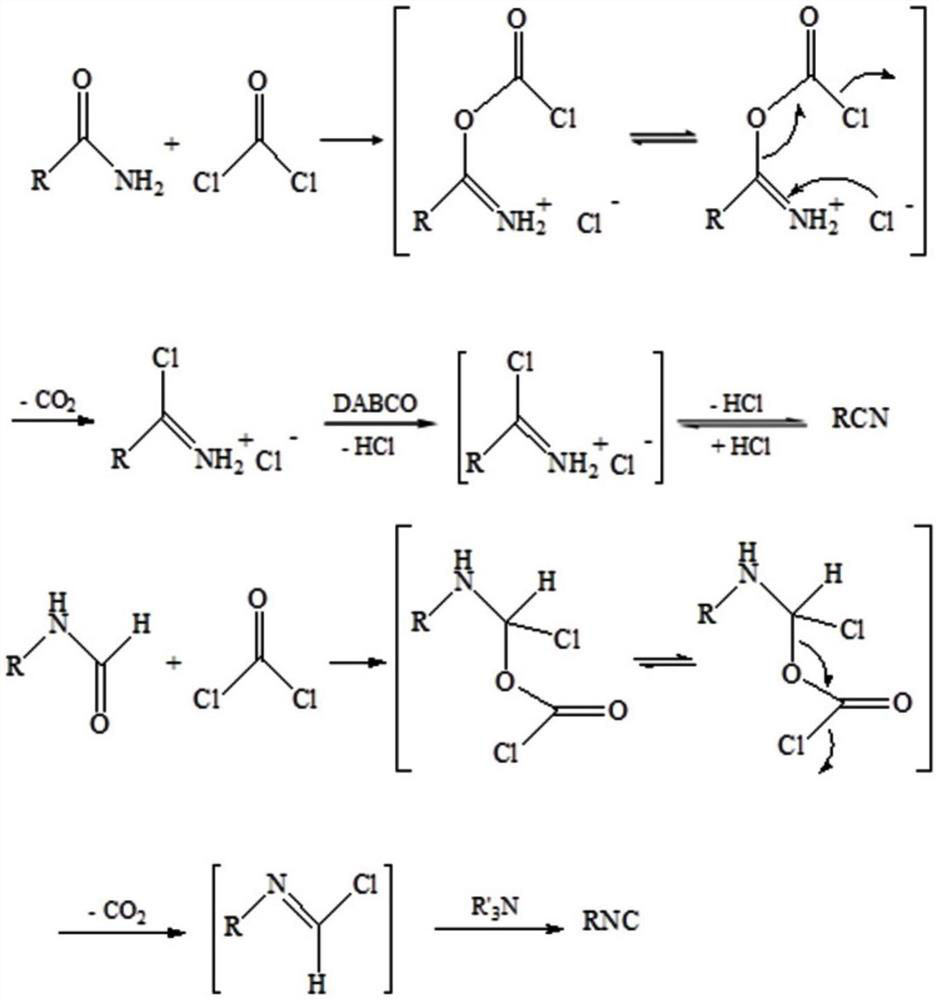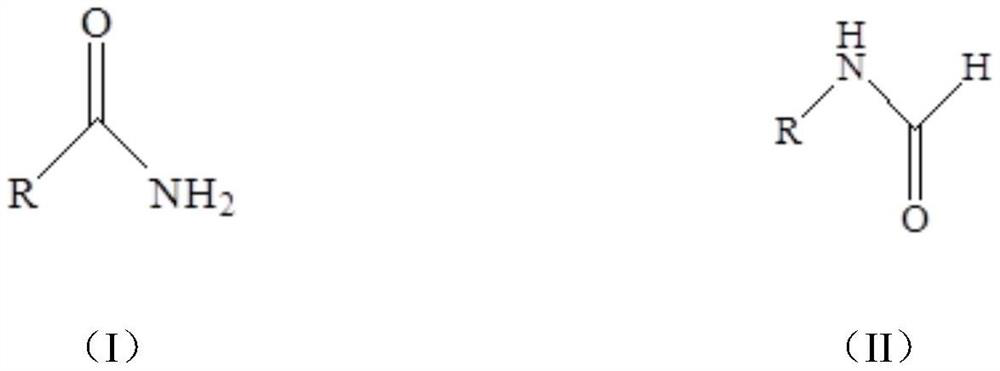A kind of defoaming method of amide compound and phosgene reaction system
A technology of amide compounds and reaction systems, applied in the preparation of organic compounds, chemical instruments and methods, organic chemistry, etc., can solve the problem of affecting reaction yield and product purity, unfavorable reaction yield and product purity, unfavorable industrial production, etc. problems, to achieve the effect of ensuring the safety of the preparation, no toxic and side effects, and inhibiting the foaming effect
- Summary
- Abstract
- Description
- Claims
- Application Information
AI Technical Summary
Problems solved by technology
Method used
Image
Examples
Embodiment 1
[0027] A method for defoaming the reaction system of amide compounds and phosgene, specifically, using polytrifluoropropylmethylsiloxane as a defoaming agent to perform defoaming treatment on the reaction system of amide compounds and phosgene, that is, polytrifluoropropylmethylsiloxane Propyl methyl siloxane is directly added in the amide compound and phosgene reaction system, comprising the following steps:
[0028] 500g (3.65mol) o-hydroxybenzamide, 3000g (32.57mol) toluene, 0.5g 1,4-diazabicyclo[2.2.2]octane and 0.05g polytrifluoropropylmethylsiloxane Add it into a 5000mL three-neck flask, mix well to obtain a mixture, the volume of the mixture is 3900mL; stir the obtained mixture at a speed of 300rpm and heat it to 110°C, and feed 433g (4.38mol) of phosgene within 5h , that is, the feed rate of phosgene is 0.876mol / h, after the completion of the feed of phosgene, the insulation is continued for 0.5h, and the reaction is finished to obtain a reaction solution; 1510g toluen...
Embodiment 2
[0030]A method for defoaming a reaction system of amide compounds and phosgene, specifically, using polytrifluoropropylmethylsiloxane solution as a defoaming agent to perform defoaming treatment on the reaction system of amide compounds and phosgene. The fluoropropylmethylsiloxane solution is added to the amide compound and phosgene reaction system, comprising the following steps:
[0031] 500g (3.65mol) o-hydroxybenzamide, 3000g (32.57mol) toluene, 0.5g 1,4-diazabicyclo[2.2.2]octane and 0.5g polytrifluoropropylmethylsiloxane Solution (the polytrifluoropropylmethylsiloxane solution is prepared by mixing polytrifluoropropylmethylsiloxane and tri-n-butyl phosphate, and in the polytrifluoropropylmethylsiloxane solution The mass fraction of polytrifluoropropylmethylsiloxane is 1%) into a 5000mL three-necked flask, and mix uniformly to obtain a mixture, which has a volume of 3900mL; the obtained mixture is stirred and heated at a speed of 300rpm To 110 DEG C, and pass into 433g (4...
Embodiment 3
[0033] A method for defoaming the reaction system of amide compounds and phosgene, specifically, using polytrifluoropropylmethylsiloxane solution as a defoaming agent to defoam the reaction system of amide compounds and phosgene, that is, polytrifluoropropylmethylsiloxane The fluoropropylmethylsiloxane solution is added to the amide compound and phosgene reaction system, comprising the following steps:
[0034] 500g (3.65mol) o-hydroxybenzamide, 3000g (32.57mol) toluene, 0.5g 1,4-diazabicyclo[2.2.2]octane and 0.5g polytrifluoropropylmethylsiloxane Solution (the polytrifluoropropylmethylsiloxane solution is prepared by mixing polytrifluoropropylmethylsiloxane and tri-n-butyl phosphate, and in the polytrifluoropropylmethylsiloxane solution The mass fraction of polytrifluoropropylmethylsiloxane is 10%) into a 5000mL three-necked flask, and mix uniformly to obtain a mixture, the volume of which is 3900mL; the resulting mixture is stirred and heated at a speed of 300rpm To 110 DEG...
PUM
| Property | Measurement | Unit |
|---|---|---|
| volume | aaaaa | aaaaa |
| quality score | aaaaa | aaaaa |
Abstract
Description
Claims
Application Information
 Login to View More
Login to View More - R&D
- Intellectual Property
- Life Sciences
- Materials
- Tech Scout
- Unparalleled Data Quality
- Higher Quality Content
- 60% Fewer Hallucinations
Browse by: Latest US Patents, China's latest patents, Technical Efficacy Thesaurus, Application Domain, Technology Topic, Popular Technical Reports.
© 2025 PatSnap. All rights reserved.Legal|Privacy policy|Modern Slavery Act Transparency Statement|Sitemap|About US| Contact US: help@patsnap.com



